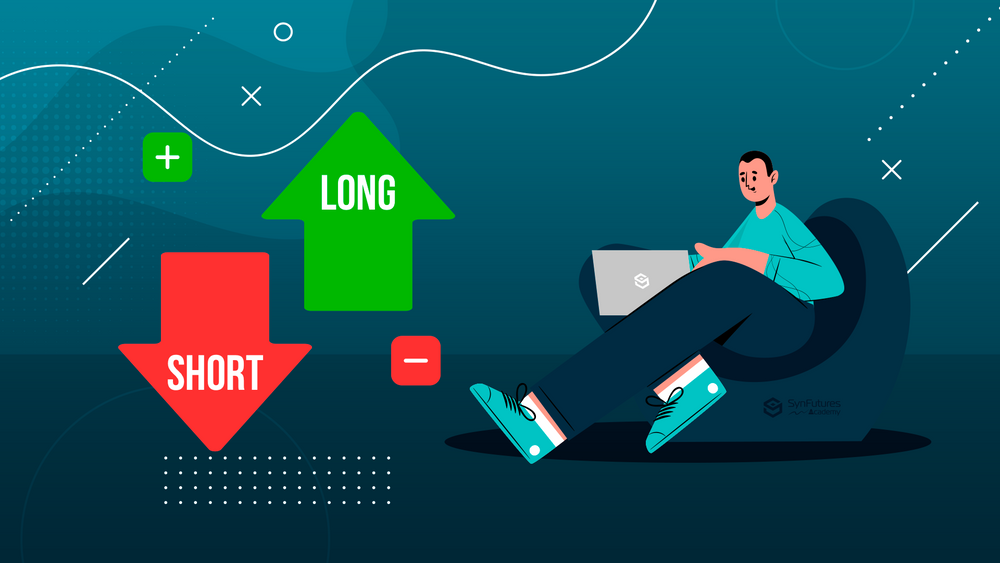What is a futures contract in DeFi?
Key takeaways:
- Futures is a type of financial contract that obligates the parties to transact something at a predetermined price on a future date.
- Futures contracts can be settled in physical delivery or cash settlement.
- Futures trading can be leveraged, therefore it is important to manage the margins when doing futures trading.
Futures
Futures is a type of financial contract that obligates the parties to transact something at a predetermined price on a future date. The predetermined price is called the forward price and the future date is called the delivery date. Because futures contract is a function of an underlying asset, by definition, it is a derivative product.
A buyer of a contract is said to be in a long position, and the seller is said to be in a short position. As both the buyer and the seller risk their counterparty walking away if the price goes against them, the contract may involve both parties putting down a margin.
Margin
Margin is the amount of money one must deposit and keep on hand when opening a futures position. It usually represents a small percentage of the notional value of the contract. Out of the various margin types in the general futures markets, the most relevant margin types for traders include initial margin, margin balance, and maintenance margin.
Initial margin is the amount of funds required to initiate a futures position. Margin balance is the amount that is marked to market based on the market price. Maintenance margin is the minimum amount that must be held at any given time to maintain the position. If the margin balance goes below the maintenance margin, then a margin call is made and the account owner must replenish the margin account to avoid being liquidated.
For example, SynFutures v1 sets the initial margin to be 10% and the maintenance margin 5%. If a trader was to long 1 BTC/USDC pair at $70,000 with an expiration of next Friday, she/he would need to deposit at least 7,000 USDC to initiate the long position. Assume the trader deposits 7,000 USDC and opened the long position (10x leverage), and BTC price dropped to $65,000. The margin balance in her/his account would drop to 2,000 USDC, less than the maintenance margin $3,250 ($65,000 x 5%). The trader would have to deposit more funds into the margin account to avoid being liquidated.
Settlement
Settlement is the act of consummating the contract. It can be done in two ways – physical delivery and cash settlement. For physical delivery, the underlying asset is delivered at expiration. For cash settlement, a cash payment is made based on the underlying asset’s reference rate. SynFutures v1 uses cash settlement. For example, if a trader was to long 1 BTC/USDC pair at $70,000 and hold it to expiration at which time BTC price increased to $75,000. Instead of paying $70,000 to buy 1 BTC and then selling it for $75,000 (scenario for physical settlement), the trader would take $5,000 profit directly without going through the buying and selling process.
Oftentimes, traders who hold futures contracts until expiration will settle their position in cash. In other words, the trader will simply pay or receive a cash settlement depending on whether the underlying asset increased or decreased during the investment holding period. In some cases, however, futures contracts will require physical delivery. In this scenario, the investor holding the contract upon expiration would be responsible for covering the cost of buying the underlying asset. Depending on the asset, the investor might also need to pay for storing, material handling, physical storage, and insurance.
Liquidation
Liquidation in futures happens when a trader’s margin balance is below the maintenance margin. It is a transaction that offsets or closes out a long or short futures position. Highly leveraged positions are prone to high liquidation exposure during volatile price swings.
Take a simplified example. A trader was to long 1 BTC/USDC pair at $70,000 with 10x leverage. If BTC price was to drop 5.3% to $66,300, the trader’s margin would fall below the maintenance margin requirement (5%). would be completely wiped. If the trader cannot add margin to maintain the position, it is at the risk of liquidation.
Liquidation is something traders should avoid as much as possible. It is crucial for traders to know their limits, how much they are willing to lose on a trade, and be strategic with leverage.
Read here for: Liquidation, partial liquidation and how to avoid it
Discover SynFutures' Crypto Derivatives products: www.synfutures.com/.
Disclaimer: SynFutures Academy does not guarantee the reliability of the site content and shall not be held liable for any errors, omissions, or inaccuracies. The opinions and views expressed in any SynFutures Academy article are solely those of the author(s) and do not reflect the opinions of SynFutures. The SynFutures Academy articles are for educational purposes or information only. SynFutures Academy has no relationship to the projects mentioned in the articles, and there is no endorsement for these projects. The information provided on the site does not constitute an endorsement of any of the products and services discussed or investment, financial, or trading advice. A qualified professional should be consulted prior to making financial decisions.




